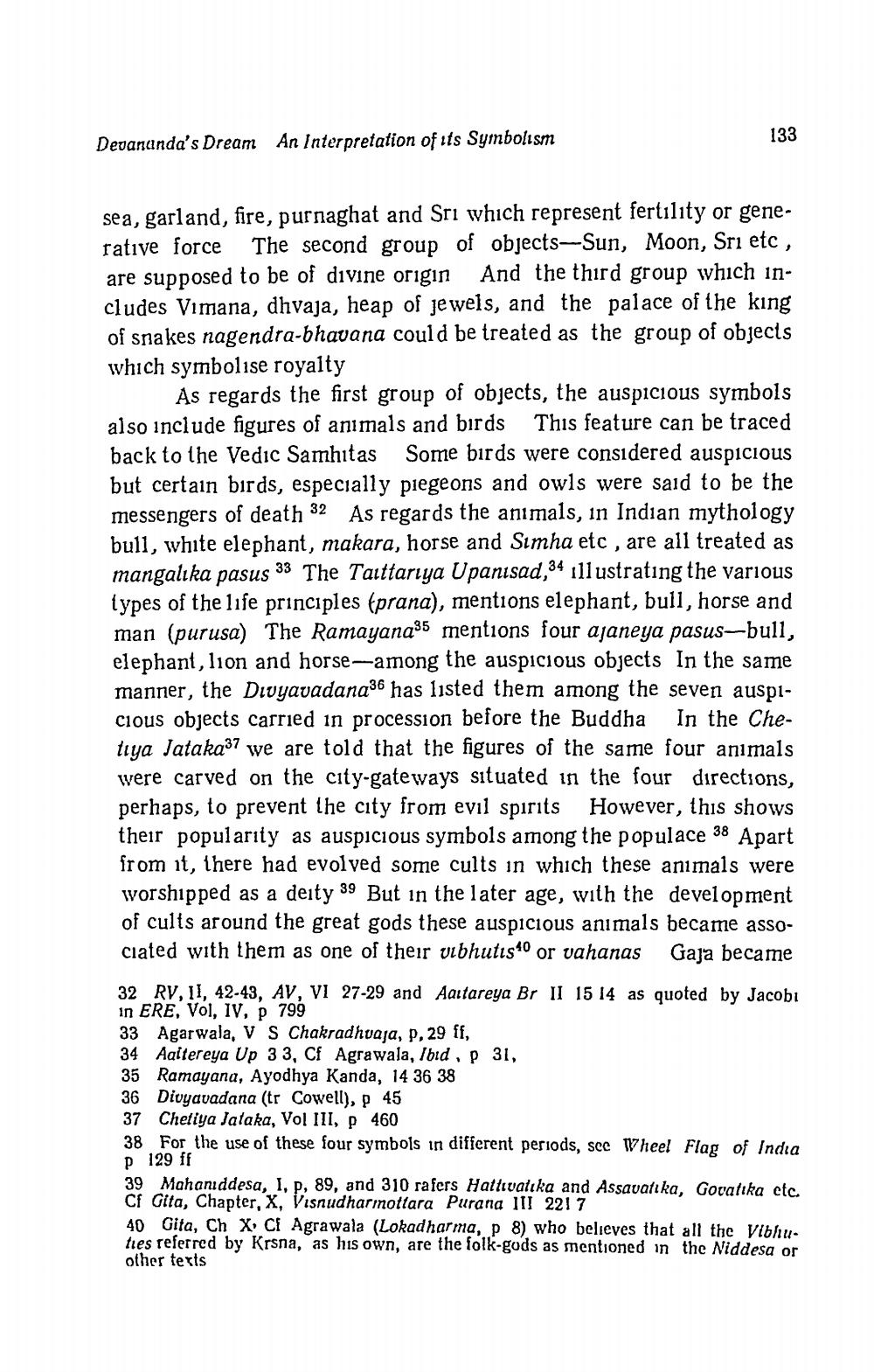________________
Devananda's Dream
An Interpretation of its Symbolism
133
sea, garland, fire, purnaghat and Sri which represent fertility or generative force The second group of objects-Sun, Moon, Sri etc, are supposed to be of divine origin And the third group which includes Vimana, dhvaja, heap of jewels, and the palace of the king of snakes nagendra-bhavana could be treated as the group of objects which symbolise royalty
As regards the first group of objects, the auspicious symbols also include figures of animals and birds This feature can be traced back to the Vedic Samhitas Some birds were considered auspicious but certain birds, especially piegeons and owls were said to be the messengers of death 32 As regards the animals, in Indian mythology bull, white elephant, makara, horse and Simha etc , are all treated as mangalıka pasus 33 The Taittarıya Upanısad,34 illustrating the various types of the life principles (prana), mentions elephant, bull, horse and man (purusa) The Ramayana35 mentions four ajaneya pasus-bull, elephant, lion and horse-among the auspicious objects in the same manner, the Divyavadana36 has listed them among the seven auspicious objects carried in procession before the Buddha In the Chetiya Jataka37 we are told that the figures of the same four a were carved on the city-gateways situated in the four directions, perhaps, to prevent the city from evil spirits However, this shows their popularity as auspicious symbols among the populace 38 Apart from it, there had evolved some cults in which these animals were worshipped as a deity 39 But in the later age, with the development of cults around the great gods these auspicious animals became associated with them as one of their vibhutisto or vahanas Gaja became
32 RV, II, 42-43, AV, VI 27-29 and Aartareya Br II 15 14 as quoted by Jacobi in ERE, VOI, IV, p 799 33 Agarwala, V S Chakradhuaja, p, 29 ff, 34 Aaitereya Up 33, Cf Agrawala, Ibid. p 31, 35 Ramayana, Ayodhya Kanda, 14 36 38 36 Divyavadana (tr Cowell), p 45 37 Chetiya Jataka, Vol III, p 460 38 For the use of these four symbols in different periods, sce Wheel Flag of India p129 ff 39 Mahanıddesa, I, P, 89, and 310 rafers Hattivatika and Assavatika, Govatika etc. Cf Gita, Chapter, X, Visnudharmottara Purana III 221 7 40 Gita, Ch X, CI Agrawala (Lokadharma, p 8) who believes that all the Vibhutres referred by Krsna, as his own, are the folk-gods as mentioned in the Niddesa or other tests




